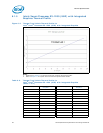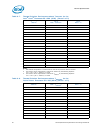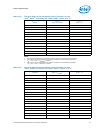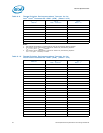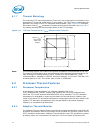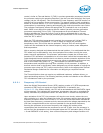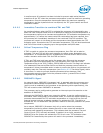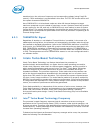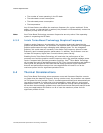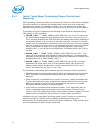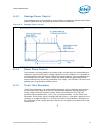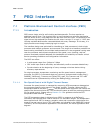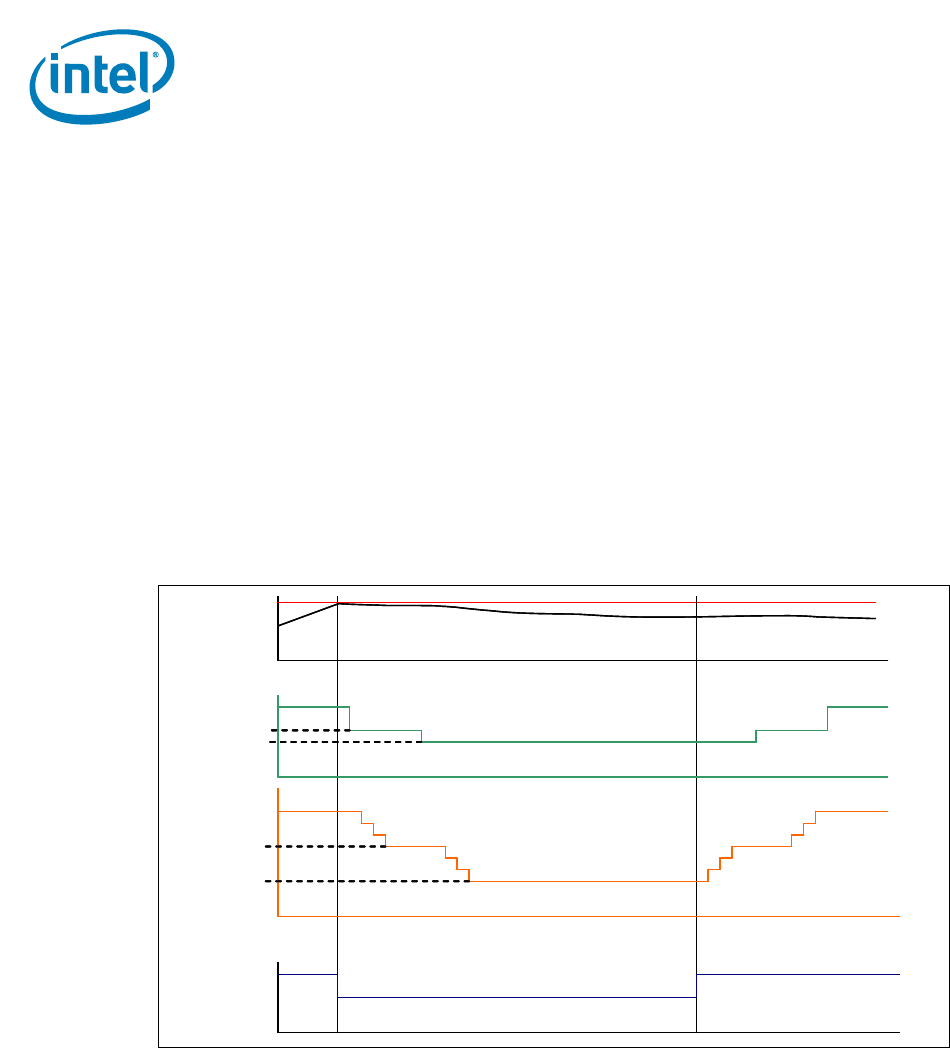
Thermal Specifications
56 Thermal/Mechanical Specifications and Design Guidelines
take place. This sequence of temperature checking and Frequency/VID reduction will
continue until either the minimum frequency has been reached or the processor
temperature has dropped below the TCC activation point.
If the processor temperature remains above the TCC activation point even after the
minimum frequency has been reached, then clock modulation (described below) at that
minimum frequency will be initiated.
There is no end user software or hardware mechanism to initiate this automated TCC
activation behavior.
A small amount of hysteresis has been included to prevent rapid active/inactive
transitions of the TCC when the processor temperature is near the TCC activation
temperature. Once the temperature has dropped below the trip temperature, and the
hysteresis timer has expired, the operating frequency and voltage transition back to
the normal system operating point via the intermediate VID/frequency points.
Transition of the VID code will occur first, to insure proper operation as the frequency is
increased. Refer to Figure 6-7 for an illustration of this ordering.
6.2.2.2 Clock Modulation
Clock modulation is a second method of thermal control available to the processor.
Clock modulation is performed by rapidly turning the clocks off and on at a duty cycle
that should reduce power dissipation by about 50% (typically a 30-50% duty cycle).
Clocks often will not be off for more than 32 microseconds when the TCC is active.
Cycle times are independent of processor frequency. The duty cycle for the TCC, when
activated by the Thermal Monitor, is factory configured and cannot be modified.
It is possible for software to initiate clock modulation with configurable duty cycles.
Figure 6-7. Frequency and Voltage Ordering
Temperature
f
MAX
f
1
f
2
VIDf
MAX
VID
Frequency
VIDf
2
VIDf
1
PROCHOT#
Temperature
f
MAX
f
1
f
2
VIDf
MAX
VID
Frequency
VIDf
2
VIDf
1
PROCHOT#



